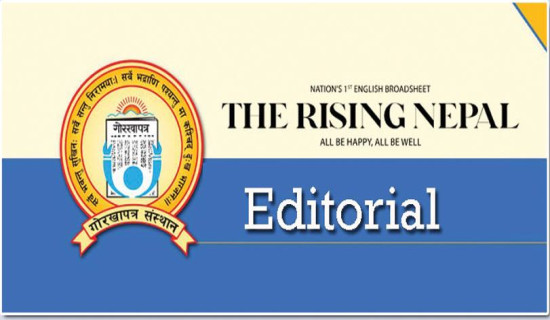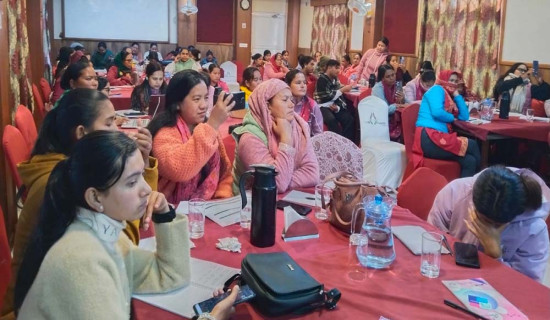- Wednesday, 24 December 2025
Feat In Forest Cover
Nepal is on a right track to restore her past glory couched in the popular aphorism – Hariyo ban, Nepal ko dhan (Green forest, Nepal’s wealth.) Indeed, the dense forests spread in a large swath of land across the country used to symbolise her identity, prosperity and ecological health for centuries. The thick forest in the Terai belt once served as a defensive wall against any external threat from the southern part during the Rana regime. The then rulers had preserved forests as strategic purpose to avoid mingling with the outsiders. This was one reason behind the high coverage of forest in the past. But, with the growing population and political changes, the forest land began to decline specially in 1980s, 1990s and early 2000s. During this period, there was reckless drive to clear forests for the purpose of increasing agriculture areas, human settlements, timber harvesting and grazing fields, among others.
The uncontrolled smuggling of timber also led to the depletion of forest resources that were the primary source of livelihoods for many people. In 1993, the government handed over forest management rights to forest user groups as per the Community Forestry Legislation & Decentralisation Act enacted in 1982. As a result, over 22,000 community forest user groups are now managing more than 34 per cent of country’s forests. This paradigm shift in the forest policy has effectively checked rampant deforestation, and conserved biodiversity and fragile structure of steep mountains. It increased the total forest cover from 25 per cent to 45 per cent, benefiting the local people, including indigenous and marginalised ethnic groups. This has enabled Nepal to fulfil one of the commitments made in the Second Nationally Determined Contributions (NDC) related to forest and its conservation.
NDC requires that the total forest cover should stand at 45 per cent, including other wooded land (OWL) limited to less than 4 per cent by 2030. A recent report ‘National Land Cover Monitoring System for Nepal (NLCMS)’ states that the forest cover has already reached 45.31 per cent, including 3.62 per cent OWL. According to the news report of this daily published on Wednesday, the forest cover has increased by 1.7 per cent between 2000 and 2019. On the other hand, rise in forest land has led to the decline of cropland and grassland by 2.10 per cent and 0.68 per cent respectively during the period, says the study released by the Forest Research and Training Centre (FRTC), under the Ministry of Forests and Environment. The Terai, Siwalik and Middle Mountain regions have witnessed rise in forest cover but it has decreased in High Mountain and High Hill.
Experts say grazing, shifting cultivation, illegal/selective logging, flooding and urbanisation have largely changed the pattern of land cover. The unprecedented increase in forest areas is largely attributed to the successful implementation of policy, law and programmes with regard to the forest management. The switch to the clean energy has led to the fewer use of forest materials, resulting in the growth of forest land. Likewise, agricultural land, grazing areas and OWL are also converted into forest land. As forests absorb more carbon, they serve as effective tool to tackle the climate change. The expanding forest cover highlights close collaboration between the government and local people, which needs to be replicated in other fields of development.

















